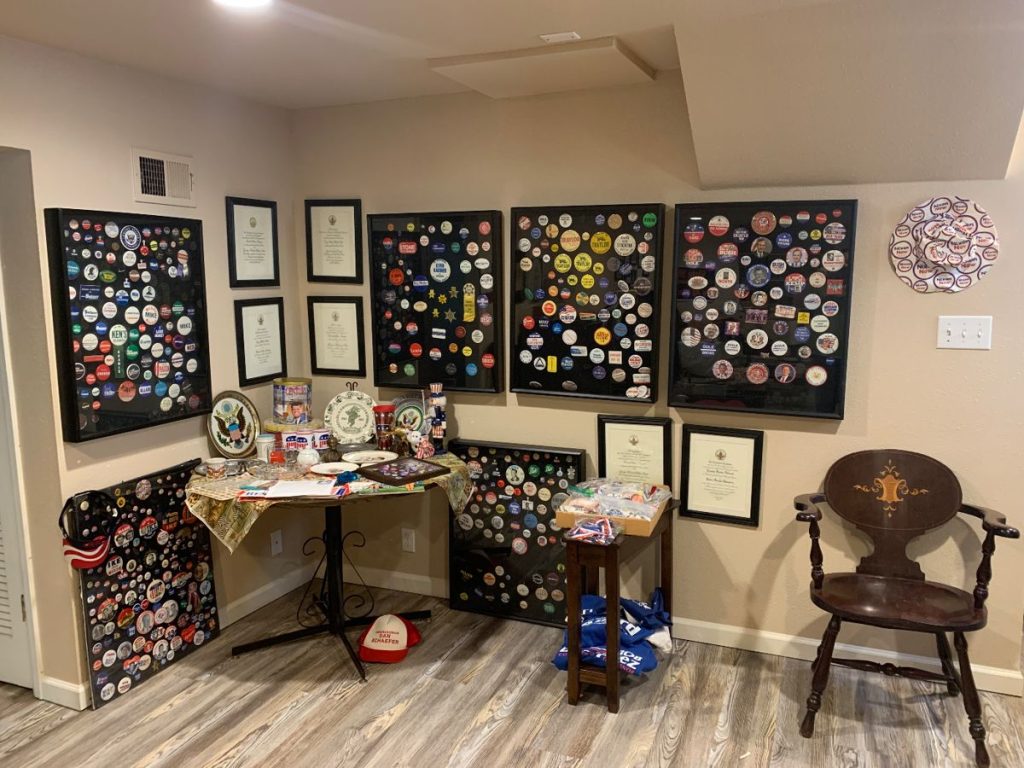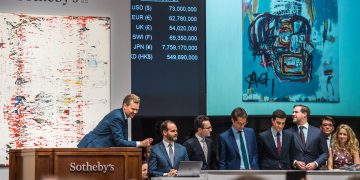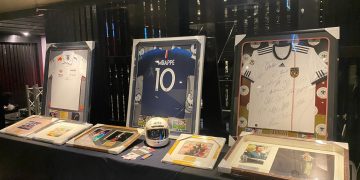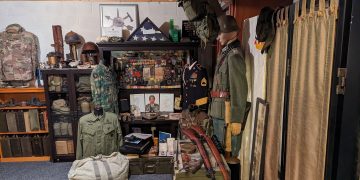In the world of art and collectibles, the line between accidental discovery and intentional success is often blurred. Sometimes, a seemingly inconspicuous exhibition, put together without much fanfare, can lead to the creation of an entirely new market—one that skyrockets in value and sparks a frenzy among collectors and investors alike. Such was the case with one particular exhibition that inadvertently ignited a $100 million market.
At first glance, this exhibition seemed like just another display of rare objects, carefully curated and presented to an audience with a refined taste for history and culture. However, its impact reverberated far beyond the walls of the gallery. The pieces shown in this exhibition went on to become some of the most highly sought-after collectibles in the market, driving prices to unprecedented heights and changing the landscape of collecting forever.
In this article, we will explore how a single exhibition sparked a collecting craze, tracking the resulting price surges and the unexpected consequences that followed. We will uncover the story behind this exhibition, analyze the key factors that made it so successful, and explore how a simple display of objects turned into a global phenomenon.
The Origins of the Exhibition
The exhibition that sparked the $100 million market wasn’t intended to be groundbreaking. In fact, it began as a small-scale event showcasing a collection of seemingly obscure items from the past. The pieces in the exhibition had no immediate connection to each other, nor did they hold any particularly high historical significance at the time. They were simply rare and fascinating artifacts—things that appealed to a niche group of collectors but hardly seemed like the sort of items that could change the entire market landscape.
The exhibition’s organizers had intended for the event to draw a crowd of curious onlookers and passionate collectors who would appreciate the uniqueness of the items on display. There was no grand vision to create a major market or to set the stage for a new craze. In fact, the exhibition’s success was so unexpected that the organizers themselves were caught off guard by what happened next.
So, what was it about this exhibition that turned it from an under-the-radar event into a game-changing phenomenon? The answer lies in a combination of factors: the objects on display, the timing of the event, and the way the market responded to the pieces in question.
The Catalyst: The Objects on Display
The exhibition was not meant to be revolutionary, but the pieces it featured became the catalysts for what would later become a multi-million-dollar market. At the heart of this exhibition were a set of seemingly ordinary objects—old, worn-out items that many would consider nothing more than relics of the past. Yet, for some inexplicable reason, these objects captured the imagination of collectors and investors in a way that few could have anticipated.
The key to the success of the exhibition lay in the rarity and historical significance of the pieces. Many of the objects had been sitting in private collections or forgotten storage for decades, collecting dust and awaiting rediscovery. Others had been preserved in obscure museums or archives, away from the public eye. What made them particularly appealing was not just their age or rarity, but their connection to a specific moment in history—a moment that had been overlooked or underappreciated by the public at large.
When these objects were brought together for the first time in a single exhibition, their combined significance became undeniable. The display created an aura of mystery and intrigue, and visitors flocked to see these items for the first time, unaware that they were witnessing the beginning of something much larger.
Timing: The Perfect Storm
While the objects themselves were extraordinary, the timing of the exhibition played a crucial role in creating the market frenzy that followed. The world of collecting is often driven by trends—certain periods or themes capture the public’s imagination at different points in time. What was once considered an obscure or niche interest can suddenly become mainstream when the conditions are right.
At the time of the exhibition, there was a growing interest in a particular area of collecting—an area that had been previously overlooked by most collectors. This burgeoning trend intersected perfectly with the objects on display, creating an environment where the demand for these items exploded overnight. As the exhibition gained momentum, word of mouth spread like wildfire, and the public began to take notice of what was happening.
The media played a significant role in amplifying the excitement surrounding the exhibition. Journalists, bloggers, and collectors alike began to speculate on the value of the objects on display, fueling a sense of urgency among potential buyers. The exhibition, initially seen as a small event, soon became the talk of the town, and the demand for the objects grew exponentially.
This was the perfect storm—the right combination of rare and intriguing objects, a market that was primed for a new trend, and media attention that catapulted the exhibition into the public consciousness.

The Spark: From Exhibition to Market Craze
What happened next was nothing short of astonishing. As soon as the exhibition closed, the prices of the objects on display began to skyrocket. Collectors who had attended the exhibition eagerly began hunting for the pieces they had seen, but now, they were no longer available at the modest prices that had once been associated with them. The objects had become hot commodities, with their value increasing by leaps and bounds.
Auction houses quickly became involved, facilitating the sale of these now-in-demand items. As word spread about the potential value of these objects, a new breed of investors entered the market. Suddenly, the exhibition pieces were no longer just for passionate collectors—they had become investment vehicles, sought after by those looking to profit from their rarity.
In the months that followed, prices for the objects displayed in the exhibition surged. What had once been considered valuable artifacts were now commanding millions of dollars at auction. What had started as a modest exhibition had given birth to a multi-million-dollar market, one that few had anticipated.
One of the most striking aspects of this market surge was the speed at which it happened. Within a matter of months, the price of some of the exhibition pieces had increased by 10, 20, even 50 times their original value. Collectors who had purchased items from the exhibition at relatively low prices found themselves sitting on veritable gold mines.
For example, one object that had been sold for a mere $10,000 at the exhibition was soon resold for over $1 million, setting off a chain reaction of sales and price escalations. Auction houses, once hesitant to take on such niche items, quickly realized the potential for profits and began aggressively promoting these pieces to the public. What had begun as a small exhibition had now become a full-fledged market, with investors and collectors alike scrambling to get in on the action.
The Resulting Price Surges: How the Market Evolved
As the market for these exhibition items grew, so did the prices. Auction houses saw record-breaking sales, and collectors who had purchased items during the exhibition quickly became millionaires. The surge in prices was not limited to a single piece of the collection. In fact, the entire genre of items represented in the exhibition saw price increases, as collectors sought out similar pieces in hopes of capitalizing on the newfound interest.
For many, the market became a speculative game—an opportunity to buy low and sell high. However, this also led to some instability in the market. Prices for some items became wildly inflated, driven by speculation rather than true demand. While the exhibition had sparked a craze, it also left many wondering whether the market was sustainable in the long term.
Nevertheless, the market continued to grow, fueled by the media frenzy and the continued demand for rare and unique collectibles. Prices surged higher, and new auction records were set regularly. The $100 million market that had emerged from the exhibition was not just a fleeting moment in history—it was the beginning of a new wave of collecting and investing.
Conclusion: The Power of an Unexpected Exhibition
The story of this exhibition that accidentally created a $100 million market is a testament to the unpredictable nature of the collectibles world. What started as a small event showcasing rare objects turned into a global phenomenon, driving prices to unprecedented levels and changing the landscape of collecting forever. The exhibition demonstrated the power of timing, media influence, and the unanticipated connections that can turn seemingly ordinary objects into priceless treasures.
While the market that emerged from this exhibition may be subject to fluctuations and speculation, it has left an indelible mark on the collectibles industry. It’s a reminder that sometimes, the most significant events in collecting are not the ones that are meticulously planned but the ones that happen by chance—and that the true value of a piece often lies in the unexpected places it takes us.

































